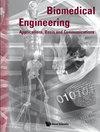有效的语义特征提高ct扫描图像中肺结节的检索
IF 0.6
Q4 ENGINEERING, BIOMEDICAL
Biomedical Engineering: Applications, Basis and Communications
Pub Date : 2022-06-13
DOI:10.4015/s1016237222500326
引用次数: 0
摘要
病人的成功治疗取决于对疾病类型的准确判断。大数据的出现促进了医学图像的检索,并帮助医生使用基于内容的医学图像检索系统(CBMIR)进行可靠的诊断。它们由特征提取模块和距离度量组成。提取的纹理特征或基于深度的特征可以识别不同类型的疾病。在本文提出的检索算法中,我们使用灰度共生矩阵作为共同的纹理特征,并将其与语义属性相结合。语义特征是放射科医生用来区分良性和恶性肿瘤的肿瘤的几何特征。这些高级属性包括欧拉数、边缘平滑度和病变大小的纵横比。我们使用Minkowski距离度量来计算图像的相似性,并将所提出的算法应用于从LIDC数据库获得的包含肺部病变的200个ct扫描数据。病变类型有良、恶性两种。通过消融研究,我们证明了语义特征的有效性。检索结果的精度为93%,与目前的研究结果相比,具有很大的前景。在未来,我们计划定义其他类型的语义属性来区分肺肿瘤的1-5期。本文章由计算机程序翻译,如有差异,请以英文原文为准。
EFFECTIVE SEMANTIC FEATURES TO IMPROVE RETRIEVAL OF LUNG NODULES IN CT SCAN IMAGES
Successful treatment of a patient depends on the accurate determination of the disease type. The advent of big data facilitates the retrieving of medical images and helps physicians in reliable diagnoses using content-based medical image retrieval systems (CBMIR). They consist of a feature extraction module and a distance metric. The extracted textural or deep-based features identify different types of diseases. In the proposed retrieval algorithm, we use the gray level cooccurrence matrix as the common textural characteristics and integrate them with semantic attributes. The semantic features are the geometric characteristics of the tumor that a radiologist employ to distinguish between benign and malignant tumors. These high-level attributes include the Euler number, margin smoothness, and the aspect ratio of the lesion’s size. We used the Minkowski distance measure for computing the similarity of images and applied the proposed algorithm to 200 CT-scan data containing lung lesions obtained from the LIDC database. The types of lesions were benign and malignant. Employing an ablation study, we proved the effectiveness of the semantic feature. The precision of the retrieval results is 93% which is promising compared to recent studies. In the future, we plan to define other kinds of semantic attributes to distinguish stages 1–5 of lung tumors as well.
求助全文
通过发布文献求助,成功后即可免费获取论文全文。
去求助
来源期刊

Biomedical Engineering: Applications, Basis and Communications
Biochemistry, Genetics and Molecular Biology-Biophysics
CiteScore
1.50
自引率
11.10%
发文量
36
审稿时长
4 months
期刊介绍:
Biomedical Engineering: Applications, Basis and Communications is an international, interdisciplinary journal aiming at publishing up-to-date contributions on original clinical and basic research in the biomedical engineering. Research of biomedical engineering has grown tremendously in the past few decades. Meanwhile, several outstanding journals in the field have emerged, with different emphases and objectives. We hope this journal will serve as a new forum for both scientists and clinicians to share their ideas and the results of their studies.
Biomedical Engineering: Applications, Basis and Communications explores all facets of biomedical engineering, with emphasis on both the clinical and scientific aspects of the study. It covers the fields of bioelectronics, biomaterials, biomechanics, bioinformatics, nano-biological sciences and clinical engineering. The journal fulfils this aim by publishing regular research / clinical articles, short communications, technical notes and review papers. Papers from both basic research and clinical investigations will be considered.
 求助内容:
求助内容: 应助结果提醒方式:
应助结果提醒方式:


